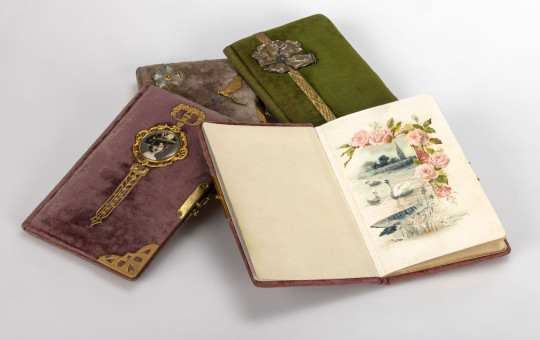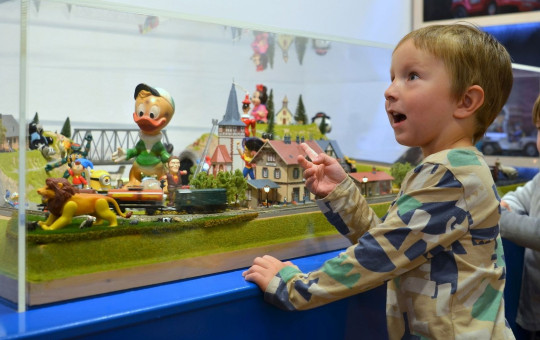Date: 10. November 2025
Time to read: 1 min
The term citizen science is relatively new in Slovenia. It originates from the English term citizen science and was proposed and substantiated by academician Prof. Dr. Zdravko Mlinar. Although it has only been in use for two years, this does not mean that such projects did not exist before - they simply were not referred to as citizen science.
A historical example in Slovenia is Janez Vajkard Valvasor, who created his monumental work The Glory of the Duchy of Carniola in precisely this manner. Valvasor was an aristocrat and self-taught researcher working outside academic institutions in the 17th century, yet his contributions to science were significant. International examples include Isaac Newton, Ada Lovelace, and Charles Darwin - the latter trained as a theologian rather than a biologist.
Thanks to the introduction of the Slovenian term, there has been a rise in recognition and growth of projects incorporating the concept of citizen science.
A major step forward was the establishment of the specialized web portal citizenscience.si and the creation of the Citizen Science Network.
-
 The 2025 Citizen Science Day will take place on Wednesday, November 12, at the France Bevk Library in Nova Gorica. The event will showcase local and international projects, the Citizen Science in 5 Steps guide, and the Citizen Science Network connecting over 60 partners across Slovenia. Photo: nawstudio/Depositphotos.com
The 2025 Citizen Science Day will take place on Wednesday, November 12, at the France Bevk Library in Nova Gorica. The event will showcase local and international projects, the Citizen Science in 5 Steps guide, and the Citizen Science Network connecting over 60 partners across Slovenia. Photo: nawstudio/Depositphotos.com
So what exactly is citizen science?
“Citizen science represents a concept of scientific research where non-professional researchers are involved in studies in various ways, from different perspectives, and in different forms. These may include high school and university students, members of associations, representatives of social groups, amateur researchers, and other interested citizens who do not conduct research professionally,”
states the introduction of the new Slovenian handbook Citizen Science in 5 Steps.
Numerous Slovenian Projects
Slovenia can be proud of the number of citizen science projects relative to its size and population. Another distinctive feature is the large share of interdisciplinary projects.
“In the Citizen Science Network, we decided not to strictly follow the European definition, which includes only scientific projects. Instead, we also welcome initiatives that have the potential to become good scientific projects. Of course, they must use sound scientific methods and collect high-quality data. Many excellent projects are organized by associations and even individuals,” explains Mitja V. Iskrić from the Central Technical Library of the University of Ljubljana, who works within the Citizen Science Network.
Examples of participating projects include Modrosti pod lupo (Wisdom Under the Lens), Povezani za morje (Connected for the Sea), Zapisi spomina (Memory Records), Urbani kolesarski laboratorij Ljubljana (Urban Cycling Lab Ljubljana), and Ste čutili potres? (Did You Feel the Earthquake?).
A full list is available at https://citizenscience.si/aktivnosti/katalog-projektov/.
You can also learn about these projects in the podcast Together Toward Discoveries, hosted by Dr. Zarja Muršič, who interviews participants involved in citizen science initiatives.
Unlike abroad, where citizen science is typically coordinated by universities or museums (particularly natural history ones), in Slovenia the movement began in an academic library - the Central Technical Library (CTK). Libraries continue to play a leading role today.
CTK actively sought out citizen science projects and offered them its infrastructure.
“For instance, we helped the SiDock project by setting up a website and provided access to our 3D printing services in the CTK Makerspace,”
notes Iskrić.
CTK has been promoting and developing citizen science in Slovenia for eight years and serves as the lead institution for citizen science activities under the Action Plan of the Ministry of Higher Education, Science and Innovation.
-
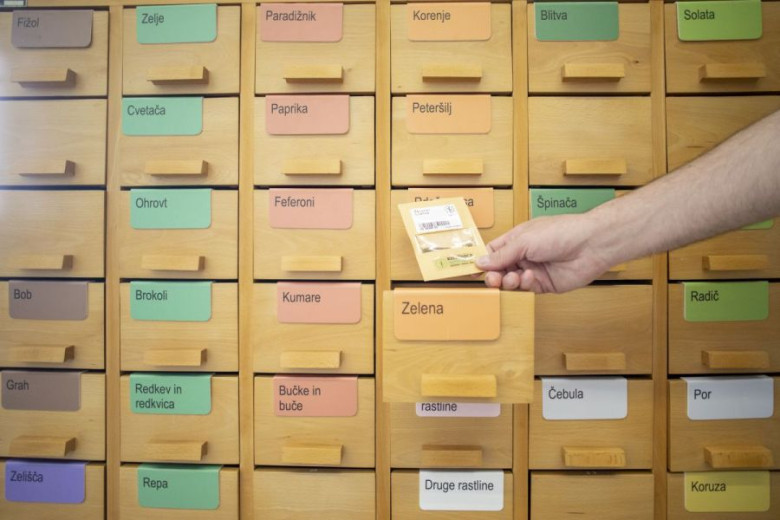 A seed library is one of the ways to preserve the biodiversity of cultivated plants, based on the free exchange of seeds. The existence of seed libraries in a given area strengthens the local community, enables the exchange of good practices, and promotes the protection and preservation of local, traditional, and indigenous plant species. Photo: Gašper Lešnik
A seed library is one of the ways to preserve the biodiversity of cultivated plants, based on the free exchange of seeds. The existence of seed libraries in a given area strengthens the local community, enables the exchange of good practices, and promotes the protection and preservation of local, traditional, and indigenous plant species. Photo: Gašper Lešnik
Citizen Science Day
The Citizen Science Network includes 69 partners and 85 projects, of which 65 are currently active. In addition to conferences, educational programs, and workshops, the network also organizes exhibitions dedicated to citizen science.
They have produced both electronic and printed versions of the handbook Citizen Science in 5 Steps, a practical tool and guide for participants in such projects.
One of the network’s key initiatives is the development and implementation of a comprehensive training program for everyone interested in citizen research, aimed at strengthening participants’ scientific, organizational, and collaborative skills.
The network is currently organizing the 3rd Citizen Science Day, a full-day event to be held on 12 November 2025 in cooperation with the France Bevk Public Library of Nova Gorica and the Central Technical Library of the University of Ljubljana.
Both professionals and the general public are invited to attend and learn about inspiring domestic and international projects that demonstrate successful citizen engagement in research processes.
-
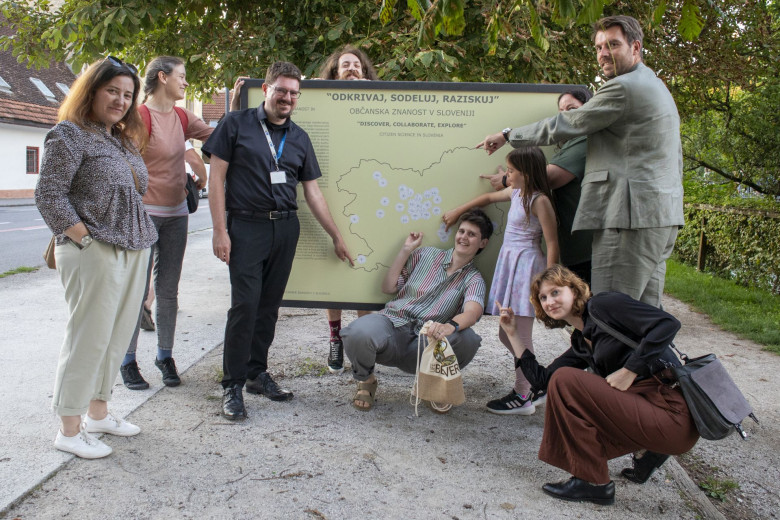 The exhibition “Discover – Participate – Research” introduced visitors to citizen science in Slovenia and showed how everyone could contribute to research. Photo: Gašper Lešnik
The exhibition “Discover – Participate – Research” introduced visitors to citizen science in Slovenia and showed how everyone could contribute to research. Photo: Gašper Lešnik
-
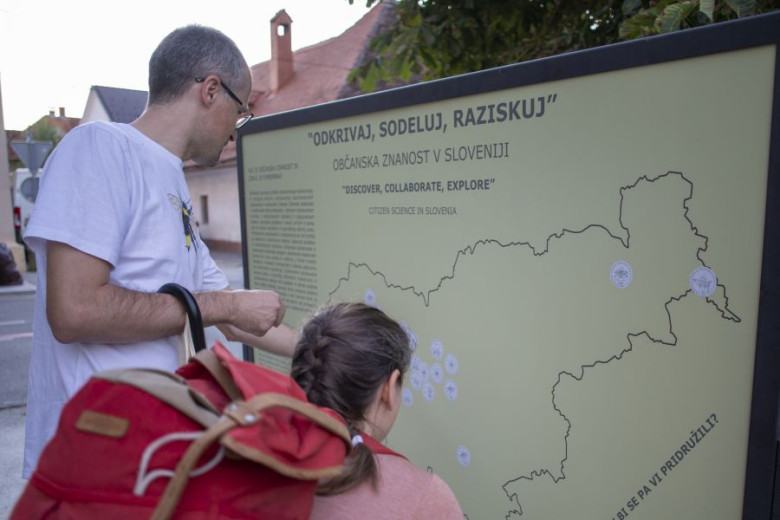 Visitors learned about concrete examples, tools, and methods of citizen science and deepened their understanding of research work. Photo: Gašper Lešnik
Visitors learned about concrete examples, tools, and methods of citizen science and deepened their understanding of research work. Photo: Gašper Lešnik



